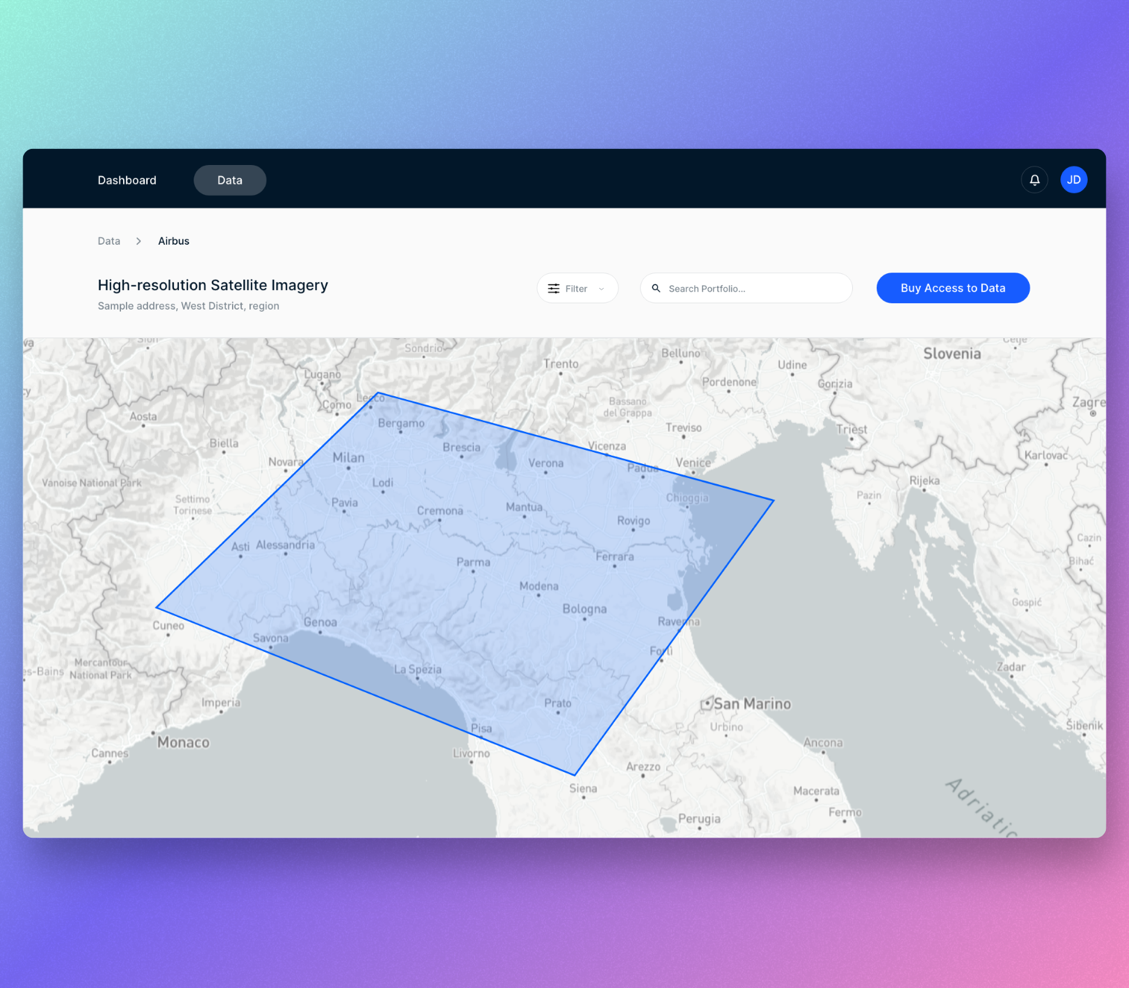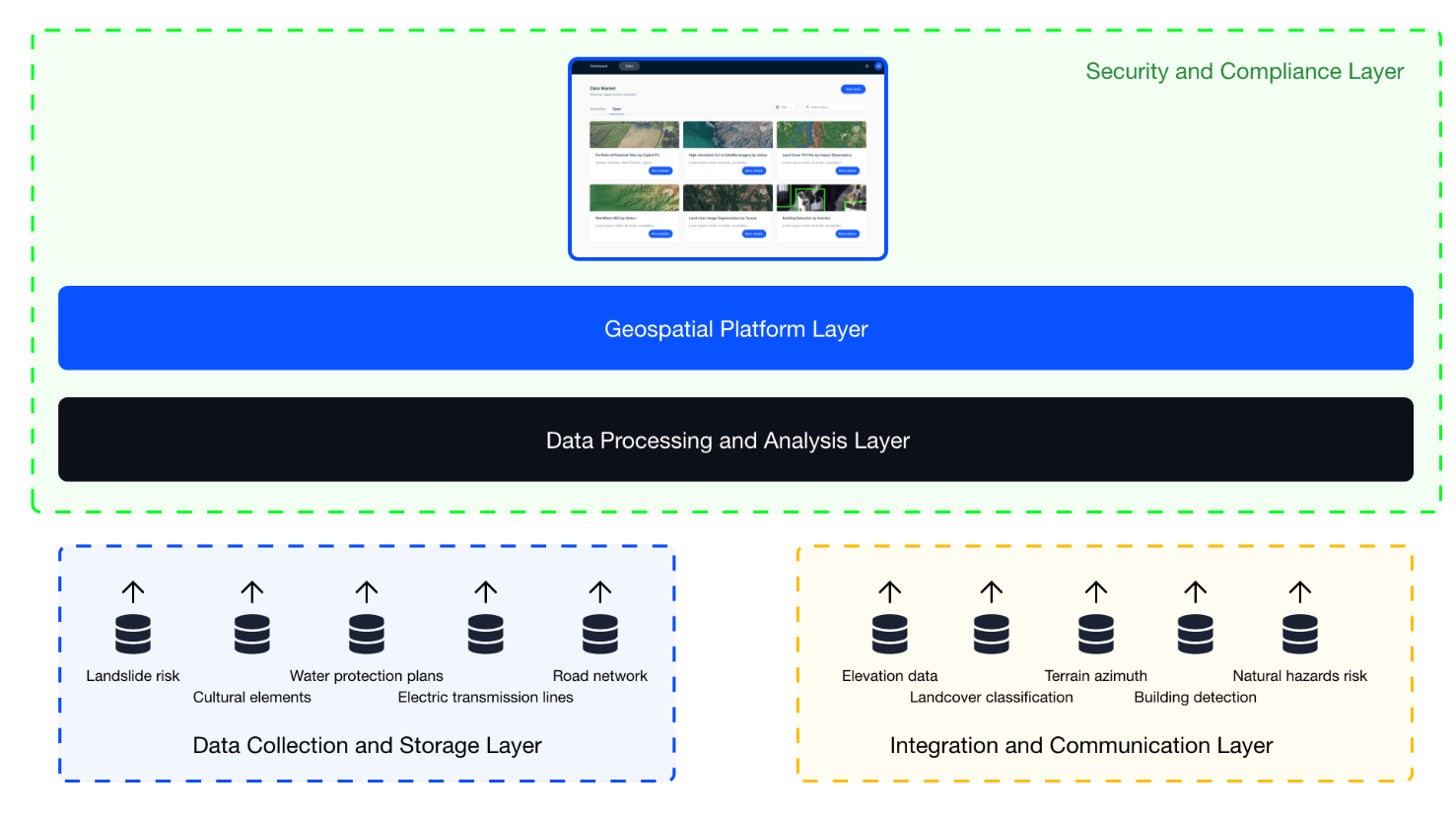
Objectives of the service

The objective of FLARE is to address the key problem faced by renewable energy developers and investors, namely the difficulty in identifying suitable land for renewable energy projects. While solar and wind resources are important factors to consider when assessing land suitability, there are a wide range of other factors that must be taken into account as well, including electricity demand, infrastructure, and proximity to exclusion zones.
FLARE provides a solution to this problem by leveraging earth observation data and other geospatial data sources to deliver detailed insights and analytics on land suitability for renewable energy projects. By combining a wide range of data sources and using advanced analytics tools, FLARE is able to provide a comprehensive view of land suitability that goes beyond traditional methods.
Users and their needs
Target customers for the project are:
Energy Developer: The companies are often large enterprise companies investing in renewable energy projects internationally. The energy developer experiences inefficient processes on manual coordination and information sharing. It is difficult to get an overview of potential land and compare opportunities against each other. The business developer wants rapid and quick screening of opportunities and get the necessary information and documentation immediately.
Land agents: Land agents are smaller agency-based companies with a strong local network and work as a broker between energy developers and landowners. The land agents often have a local presence and are landowners’ first point of contact if they want to sell their land.
Government Agencies: This segment includes government agencies responsible for planning and regulating areas for renewable energy projects. These agencies need access to reliable data and analyses to make informed decisions about energy planning, infrastructure development, and policymaking. Government agencies want to share data and maps with local stakeholders, interest organisations and the local community. They experience difficulties with deriving relevant data and sharing it due to requirements of technical know-how in today’s solutions.
Service/ system concept
FLARE is a software analytics platform that provides users with a geospatial view of earth observation data, making it easier to conduct feasibility studies and plan renewable energy opportunities. Users can access governmental data, data intelligence, and geospatial analyses that go beyond traditional solar and wind resources to help assess land suitability.
With FLARE, users can quickly identify renewable energy land opportunities, assess their potential for renewable energy, and share these opportunities with energy developers. The software platform is easy to use and accessible, and it provides users with valuable insights that can be used to speed up the planning process for renewable energy projects.
The FLARE architecture is based on a cloud-based platform that integrates with a variety of data sources, including governmental data and earth observation data. The system uses advanced geospatial analytics and machine learning algorithms to provide users with detailed insights into land suitability and renewable energy potential. The system also includes a set of APIs that can be used to integrate with other software applications, making it a valuable tool for developers and other users looking to leverage geospatial analytics and earth observation data.

Space Added Value
FLARE leverages earth observation data as a key space asset to achieve its goals of providing detailed insights into land suitability for renewable energy projects. Earth observation data is collected from a variety of satellite-based sensors and platforms, and includes data on solar and wind resources, as well as other important factors like land cover, topography, and infrastructure.
By combining earth observation data with other geospatial data sources, FLARE is able to provide a more comprehensive view of land suitability than other existing methods. For example, while traditional methods for assessing land suitability might focus solely on solar and wind resources, FLARE takes into account a wide range of factors like electricity demand, transmission lines, and exclusion zones.
This approach provides a more nuanced and accurate view of land suitability, allowing users to identify renewable energy opportunities that might have been overlooked using traditional methods. Additionally, the use of space assets like earth observation data allows FLARE to provide this information in a highly accessible and user-friendly way, reducing the need for costly and time-consuming fieldwork and surveys.
Current Status
In March 2023, the project successfully completed a Kick-Start Activity. FLARE is a platform that offers a geospatial view of earth observation data, providing valuable insights into land suitability for renewable energy projects. The platform targets energy developers, land agents, and government agencies, offering an easy-to-use and accessible solution that goes beyond traditional methods of assessing land suitability. FLARE has the potential to capture a significant market share due to the growing demand for renewable energy and the increasing need for accurate and comprehensive land suitability assessments.



